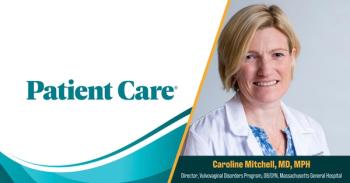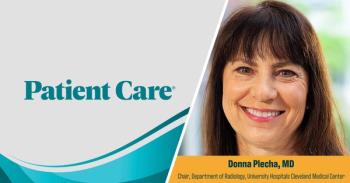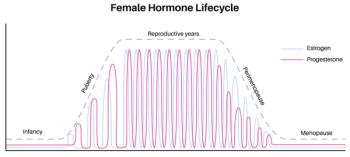
Hypertension in the Elderly:
ABSTRACT: Most hypertensive patients require lifestyle modification and multiple-drug therapy to achieve current blood pressure (BP) goals of less than 140/90 mm Hg and less than 130/80 mm Hg for those with diabetes mellitus or renal disease. For patients older than 65 years, the recommended initial antihypertensive is a thiazide diuretic. If a diuretic does not adequately control BP or is contraindicated, base the selection of an antihypertensive medication on comorbid conditions. For example, a ß-blocker may benefit a patient with coronary artery disease, while an angiotensin-converting enzyme inhibitor may help forestall renal disease in a patient with type 2 diabetes mellitus. The adage "start low and go slow" is appropriate to help avoid side effects and ensure compliance; however, most elderly patients eventually require standard dosages of medications to adequately control BP.
Hypertension is the most common outpatient diagnosis made by primary care physicians1; it accounts for more than 35 million office visits per year in the United States.2 As the population of older Americans grows, more cases of hypertension will be diagnosed every day. Results from the Framingham Study suggest that patients who are normotensive at age 55 years have a 90% lifetime risk of hypertension.3
Uncontrolled hypertension has been linked to stroke and cardiovascular disease, such as atrial fibrillation, congestive heart failure, and coronary artery disease. Adequate blood pressure (BP) control has been shown to reduce morbidity and mortality and to be cost-effective.4,5
The National High Blood Pressure Education Program recently published new guidelines for the diagnosis and management of hypertension. The Seventh Report of the Joint National Committee on Prevention, Detection, Evaluation, and Treatment of High Blood Pressure (JNC 7) was developed after careful evaluation of the evidence.1
The JNC 7 contains important changes to the previous report (JNC VI), published in 1997. Key among these are updated treatment recommendations for hypertensive elderly patients. This population has the lowest rates of BP control.6 Because elderly patients often have unique needs and comorbid conditions, the selection of appropriate antihypertensive therapy can be a challenge.
Here I provide highlights of the JNC 7 recommendations for management of hypertension in the elderly. The focus is on how to achieve BP goals cost-effectively and with minimal adverse effects.
CLASSIFICATION OF HYPERTENSION
In the JNC 7, the classification of hypertension and management of BP has been updated, as follows:
Normal: BP less than 120/80 mm Hg.
Prehypertension: patients with a systolic BP between 120 and 139 mm Hg or a diastolic BP between 80 and 89 mm Hg are considered prehypertensive and have a higher risk of hypertension in the future. Lifestyle modification is recommended for these patients; however, drug treatment is indicated only for those with diabetes mellitus or chronic renal failure.
Stage 1 hypertension: patients with a systolic BP of 140 to 159 mm Hg or a diastolic BP of 90 to 99 mm Hg should be treated with both lifestyle modification and drug therapy.
Stage 2 hypertension: patients with a systolic BP of 160 mm Hg or higher or a diastolic BP of 100 mm Hg or higher should be treated with both lifestyle modification and drugs.
The notable differences are the addition of the prehypertension category and the combination of previous hypertension stages 2 and 3. The prehypertension category was included because increases in the systolic or diastolic BP were associated with increased cardiovascular risk. For persons aged 40 to 70 years, each increase of 20 mm Hg in systolic BP or 10 mm Hg in diastolic BP doubled the risk of cardiovascular disease across the entire BP range.7
ACCURATE BP MEASUREMENT
The JNC 7 reiterates the proper technique for measuring BP (Box). Be sure your clinical staff use this technique when they measure BP. The technique allows for reproducibility and ensures that the correct pressure is measured.
TREATMENT RECOMMENDATIONS
Benefits of lowering BP. Studies have shown that treatment reduces the occurrence of stroke by 35% to 40%, myocardial infarction by 20% to 25%, and congestive heart failure by 50%.4 In patients with stage 1 hypertension, 11 patients need to be treated with a regimen that maintains a 12- mm Hg decrease in systolic BP for 10 years to prevent 1 death. If these patients also have cerebrovascular disease, then 9 patients need to be treated with a regimen that maintains a 12- mm Hg decrease in systolic BP for 10 years to prevent 1 death.5
BP goals. The purpose of treatment is to reduce the morbidity and mortality associated with cardiovascular and renal disease. Currently, a BP of less than 140/90 mm Hg is the target for most hypertensive patients. A BP of less than 130/80 mm Hg is the goal for those who have diabetes or renal disease.8,9 For patients older than 50 years, a high systolic BP has been shown to be a more important risk factor for cardiovascular disease than a high diastolic BP.10
Lifestyle modification. For all patients with hypertension, initial management should include adoption of a healthy lifestyle. The following lifestyle modifications used in combination can significantly lower BP11,12:
Weight reduction: patients should maintain a normal body weight (body mass index, 18.5 to 24.9).
Implementation of the Dietary Approaches to Stop Hypertension (DASH) eating plan: this diet requires the consumption of foods, such as fruits, vegetables, and low-fat dairy products, that are rich in potassium and calcium.
Reduction in dietary sodium intake: encourage patients to reduce their daily sodium intake to no more than 2.4 g of sodium or 6 g of sodium chloride).
Increased physical activity: regular aerobic exercise, such as brisk walking (for at least 30 minutes per day, most days of the week), is sufficient.
Moderation of alcohol consumption: most men should limit their alcohol intake to 2 drinks per day. Women and lighter-weight persons should have no more than 1 drink per day (equivalent to 12 oz of beer, 5 oz of wine, or 1.5 oz of 80-proof liquor).
The BP reduction associated with the DASH eating plan is similar to that achieved with single-drug therapy.10 Have elderly patients with stage 1 hypertension continue lifestyle modifications for 4 to 6 months before you add drug therapy. Patients with stage 2 hypertension need at least 2 interventions. For elderly patients with stage 2 hypertension, I recommend combining the DASH eating plan with a low-dose thiazide diuretic.
Antihypertensive drug therapy. Most patients do not respond to lifestyle modifications alone or are unable or unwilling to comply with the recommendations. For these patients, drug therapy is indicated (Table 1).
The recommended initial medication for patients older than 65 years is a thiazide diuretic. This class of antihypertensive medication has a long track record of efficacy, with strong evidence showing decreased morbidity and mortality.13,14 In addition, thiazide diuretics are well tolerated and effective in elderly patients.
For all elderly patients, the adage "start low and go slow" is appropriate to help avoid side effects, such as postural hypotension, and ensure compliance. However, most elderly patients eventually require standard dosages of medications to achieve adequate BP control.1
Dosages for hydrochlorothiazide, for instance, can begin as low as 6.25 mg/d and be increased up to a maximum of 50 mg/d. Dosages higher than 50 mg/d do not improve BP control and are associated with a greater likelihood of side effects. Rather than increase the dosage of hydrochlorothiazide above 25 mg/d, better control with fewer side effects is achieved by adding a second agent. The most common side effects include hypokalemia, hyponatremia, hyperuricemia, and hyperglycemia. Serious reactions include renal failure and pancreatitis. Monitor serum potassium and creatinine levels twice per year in elderly patients who take thiazide diuretics.
If a thiazide diuretic does not adequately control BP or is contraindicated, the selection of an antihypertensive medication for an elderly patient is typically based on comorbid conditions (Table 2). For example, a β-blocker may benefit a patient with coronary artery disease, while an angiotensin-converting enzyme inhibitor may help forestall renal disease in a patient with type 2 diabetes mellitus.
Remember that most patients-including elderly persons-need lifestyle modifications with either single-drug or multiple-drug therapy to adequately control their BP.15,16 In fact, consider starting with multiple-drug therapy in patients who are 20 mm Hg above their systolic goal or 10 mm Hg above their diastolic goal. For elderly patients who require multiple-drug therapy, thiazides are the mainstay of treatment.
FOLLOW-UP
Close follow-up and monitoring of elderly patients with hypertension is key to maintaining BP control and encouraging compliance. Schedule visits for follow-up and medication adjustment approximately monthly until patients reach their BP goal.1 Patients with stage 2 hypertension or comorbid conditions may need more frequent visits.
After the BP goal has been reached and is stable, I recommend routine follow-up visits every 3 to 6 months. The frequency of follow-up visits depends on comorbid conditions, such as diabetes and congestive heart failure, and the need for laboratory tests. Because of the increased risk of hemorrhagic stroke in patients who have uncontrolled hypertension, consider low-dose aspirin therapy only after BP is controlled.17 n
References:
REFERENCES:
1. Cherry DK, Woodwell DA. National Ambulatory Medical Care Survey: 2000 summary. Adv Data. 2002;328:1-32.
2. Chobanian AV, Bakris GL, Black HR, et al. The Seventh Report of the Joint National Committee on Prevention, Detection, Evaluation, and Treatment of High Blood Pressure: the JNC 7 Report. JAMA. 2003;289:2560-2572.
3. Vasan RS, Beiser A, Seshadri S, et al. Residual lifetime risk for developing hypertension in middle-aged women and men: The Framingham Heart Study. JAMA. 2002;287:1003-1010.
4. Neal B, MacMahon S, Chapman N. Effects of ACE inhibitors, calcium antagonists, and other
blood-pressure-lowering drugs. Blood Pressure
Lowering Treatment Trialists' Collaboration. Lancet. 2000;356:1955-1964.
5. Ogden LG, He J, Lydick E, Whelton PK. Long-term absolute benefit of lowering blood pressure in hypertensive patients according to the JNC VI risk stratification. Hypertension. 2000;35:539-543.
6. Hyman DJ, Pavlik VN. Characteristics of patients with uncontrolled hypertension in the United States. N Engl J Med. 2001;345:479-486.
7. Lewington S, Clarke R, Qizilbash N, et al. Age-specific relevance of usual blood pressure to vascular mortality. Lancet. 2002;360:1903-1913.
8. American Diabetes Association. Treatment of hypertension in adults with diabetes. Diabetes Care. 2002;25(suppl 1):S71-S73.
9. National Kidney Foundation Guideline. K/DOQI clinical practice guideline for chronic kidney disease: Kidney Disease Outcome Quality Initiative. Am J Kidney Dis. 2002;39(suppl 2):S1-S246.
10. Izzo JL Jr, Levy D, Black HR. Clinical Advisory Statement. Importance of systolic blood pressure in older Americans. Hypertension. 2000;35:1021-1024.
11. Sacks FM, Svetkey LP, Vollmer WM, et al. DASH-Sodium Collaborative Research Group. Effects on blood pressure of reduced dietary sodium and the Dietary Approaches to Stop Hypertension (DASH) diet. N Engl J Med. 2001;344:3-10.
12. Kelley GA, Kelley KS. Progressive resistance exercise and resting blood pressure. A meta-analysis of randomized controlled trials. Hypertension. 2000;35:838-843.
13. The ALLHAT Officers and Coordinators for the ALLHAT Collaborative Research Group. Major outcomes in high-risk hypertensive patients randomized to angiotensin-converting enzyme inhibitor or calcium channel blocker vs diuretic. JAMA. 2002; 288:2981-2997.
14. Psaty BM, Smith NL, Siscovick DS, et al. Health outcomes associated with antihypertensive therapies used as first-line agents. A systematic review and meta-analysis. JAMA. 1997;277:739-745.
15. Cushman WC, Ford CE, Cutler JA, et al. Success and predictors of blood pressure control in diverse North American settings: the antihypertensive and lipid-lowering treatment to prevent heart attack trial (ALLHAT). J Clin Hypertens (Greenwich). 2002; 4:393-404.
16. Black HR, Elliott WJ, Neaton JD, et al. Baseline characteristics and elderly blood pressure control in the CONVINCE trial. Hypertension. 2001;37:12-18.
17. Antithrombotic Trialist Collaboration. Collaborative meta-analyses of randomized trials of antiplatelet therapy for prevention of death, myocardial infarction and stroke in high-risk patients. BMJ. 2002;324: 71-86.
Newsletter
Enhance your clinical practice with the Patient Care newsletter, offering the latest evidence-based guidelines, diagnostic insights, and treatment strategies for primary care physicians.































































































































































































































































































